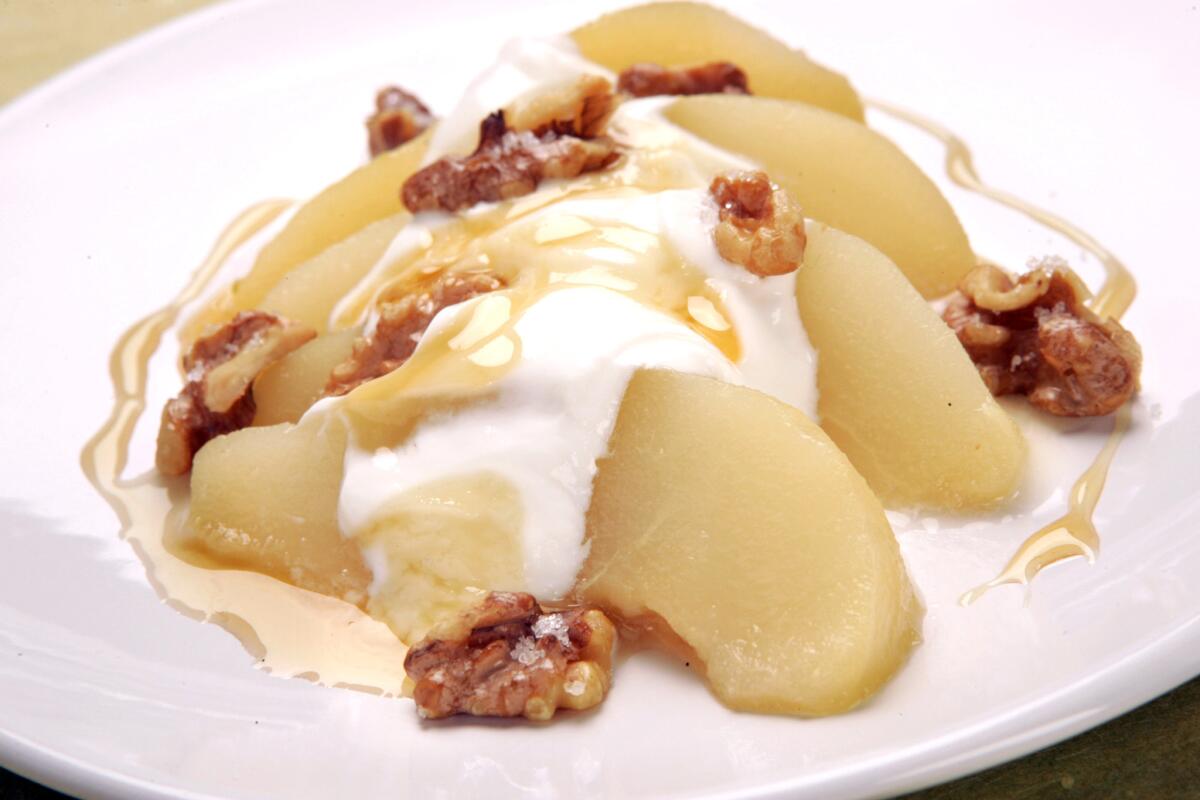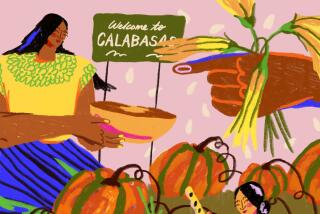Buy This Now: Pears, with 12 recipes

- Share via
Bite into a pear and you’re eating a lot more than just one of autumn’s great fruits. You’re eating history.
We make a lot of fuss over heirloom peach varieties that date to the 1960s and tomatoes that go back as far as the 1930s. But did you know that the Bartlett pear, that standard California grocery-store fruit, actually dates to the 1770s?
Called the Williams pear in England where it was first found, the Bartlett gets its name from Enoch Bartlett, who was the first person to sell the trees in the U.S. in the early 1800s. (Similarly, its original name came from the British nurseryman who introduced it there.)
“Barts” are the predominant pear grown in California, and there are two growing sites with very different fruit. The earliest pears were harvested in August around the Sacramento Delta area. They’re fine, but the ones being picked about now from the hilly orchards of Lake and Mendocino counties are much better.
And Bartletts are far from an exception. In fact, most of the pears you’ll find today have roots no later than the 19th century.
The father of the modern pear is a Belgian named Nicolas Hardenpoint, who began his work around 1730. “Nearly all pears before [Hardenpoint] were crisp or breaking in flesh,” writes U. P. Hedrick, an early 20th century fruit historian. “The soft-fleshed, melting pears were hardly known as yet.”
The breeding of pears, like that of apples, is accomplished largely by the propagation of “sports” — chance genetic mutations that are then refined by horticulturists. So enthusiastic were the Belgians about their pear-breeding, writes Hedrick, that they “seemed to have been quite carried off their feet by [it], and during the first half of the 19th century, a fad like the ‘tulip craze’ of Holland reigned in the country.
The Bosc pear dates from that period, developed by Hardenpoint’s successor, Jean Baptiste Van Mons, in 1807. The Anjou is also believed to have Belgian roots, it was introduced as Beurre d’Anjou. You’ll sometimes find Forelles at the market and they may be the oldest of all, tracing their parentage to 17th century Germany.
The Seckel originated strictly by chance — and on American soil. It seems that every fall around the beginning of the 19th century, a hunter named Dutch Jacob used to return from his rounds with the most delicious pears, the source of which he never divulged.
He eventually bought the tract of land, near Philadelphia, but soon sold it to a man named Seckel, who introduced the pear to the public. The original tree stood until at least 1870. Since it’s so different from any native American fruit, it’s thought that it sprang from seed brought over by German settlers, whose Rousselet pear it resembles.
The Comice, correctly regarded as the king of pears, was discovered by a gentleman farmer in France’s Loire Valley, where the inquisitive pear lover can find a plaque reading: “In this garden was raised in 1849-50 the celebrated pear Doyenne du Comice by the gardener Dhomme and by Millet de la Turtaudiere, President of the Comice Horticole.”
How to choose: The best perfectly ripened pears will be golden and fragrant and will have a slight softness at the neck. With Bartletts and other varieties, don’t worry if the fruit shows some russeting — that’s only skin-deep and doesn’t affect the flavor.
How to store: Pears will continue to ripen off the tree (indeed, they really have to ripen off the tree to avoid a woody texture). So if your pears are a little green and firm, just leave them at room temperature and they’ll finish up nicely. Then you can refrigerate them.
Are you a food geek? Follow me on Twitter @russ_parsons1
ALSO:
A $99 kitchen thermometer that’s worth it
A really killer frozen souffle for the last peaches
More to Read
Eat your way across L.A.
Get our weekly Tasting Notes newsletter for reviews, news and more.
You may occasionally receive promotional content from the Los Angeles Times.











